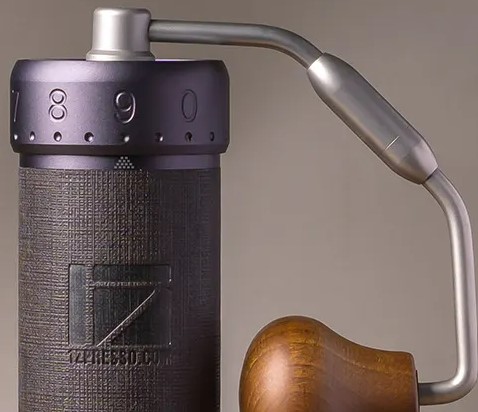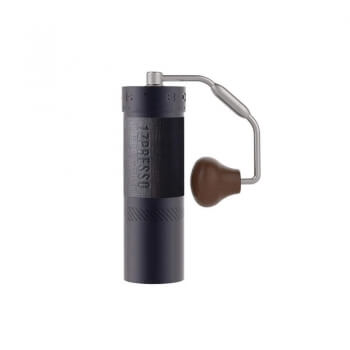Unlock the Secret to Fresh Ground Coffee: Your Ultimate Grinder Overview
Comprehending the subtleties in between blade and burr mills is simply the start; a journey that delves into grind sizes, maintenance routines, and aspects that can make or break your morning mixture awaits those looking for to grasp the art of grinding coffee beans. Join us as we navigate via the complex globe of coffee grinders, revealing the secrets that can really elevate your daily cup of joe to a new level of freshness and flavor.
Kinds of Coffee Grinders
The two major groups are blade grinders and burr grinders. Within the burr grinder category, there are flat burr mills and conelike burr grinders. Select the type of coffee mill that finest fits your brewing approach and taste preferences to raise your coffee experience.

Burr Vs. Blade Grinders
When contrasting burr and blade mills for coffee, one must think about the important differences in work uniformity and overall brewing quality. Burr mills are recognized for their capability to give an extra consistent grind dimension contrasted to blade mills. This uniformity is crucial for ensuring an also extraction during the developing procedure, ultimately leading to an extra balanced and flavorful cup of coffee. The factor behind this lies in the style of burr mills, where two rough surfaces, either level or conelike, crush the coffee beans to a regular size (1Zpresso J-Max).
On the various other hand, blade grinders chop the beans utilizing a spinning blade, which can cause unequal particle dimensions because of inconsistent grinding. This variation in particle dimensions can result in over-extraction of smaller bits and under-extraction of larger ones, influencing the overall taste and high quality of the brewed coffee. For coffee enthusiasts seeking precision and control over their work dimension, investing in a burr grinder is frequently considered the superior option.

Elements to Consider When Picking
Taking into consideration the critical duty work uniformity plays in brewing quality, when choosing between burr and blade grinders for coffee, there are a number of crucial variables to think about. Burr grinders are generally chosen for their capacity to produce uniform bit sizes, essential for a balanced removal. On the other hand, blade mills are more budget-friendly however typically lead to irregular grinds because of their slicing activity. One important element to take into consideration is the work settings offered on the grinder. Burr mills typically offer a broad variety of grind sizes, allowing you to readjust for various brewing techniques such as coffee, drip coffee, or French press. Furthermore, the mill's motor power influences the consistency and rate of the grinding procedure. Higher power level motors tend to grind coffee beans more efficiently. Size and capability are likewise essential considerations, particularly if you prepare to grind coffee in large amounts or need a small grinder for limited counter space. By meticulously reviewing these variables, you can make an educated choice that straightens with your developing choices and budget.
Grind Dimension for Various Brewing Approaches
To achieve ideal taste extraction, choosing the appropriate work dimension is crucial when preparing coffee for different developing methods. The grind size directly affects the price of removal during brewing. For techniques like coffee, which call for a brief extraction time and stress, a fine work is ideal to make the most of the surface touching water. On the other hand, developing techniques like French press or cold mixture demand a coarser grind to avoid over-extraction and resentment due to longer steeping times. Leak coffee makers function best with a tool grind dimension, enabling a balanced removal over a modest developing period. Pour-over approaches such as Chemex or V60 gain from a tool to fine grind to regulate the circulation rate and removal time. Understanding the connection between grind dimension and brewing i loved this technique is necessary for unlocking the complete possibility of your coffee beans and accomplishing a scrumptious, well-balanced cup of coffee every time.
Maintenance and Cleaning Up Tips
Ensuring appropriate maintenance and regular cleaning of click here for more info your grinder is essential for preserving its performance and prolonging its lifespan. To maintain the high quality of your coffee grounds and the efficiency of your grinder, it is advised to cleanse your grinder extensively at least as soon as a month. Start by disconnecting the grinder and dismantling it carefully, complying with the supplier's guidelines. Use a brush or a cloth to get rid of any trapped coffee bits, oils, or deposit from the burrs, hopper, and any other detachable parts. You can additionally utilize a little quantity of rice to assist absorb oils and clean hard-to-reach locations. In addition, think about utilizing grinder cleansing pellets or tablet computers for a much more in-depth cleansing process.
Regular maintenance likewise consists of looking for any kind of signs of wear and tear, such as dull burrs or loosened screws, and addressing them immediately. It is critical to maintain your mill in leading problem to ensure consistent work size and top quality coffee extraction. By including these upkeep and cleansing tips image source right into your regimen, you can delight in fresh and flavorful coffee with every mixture.

Final Thought
